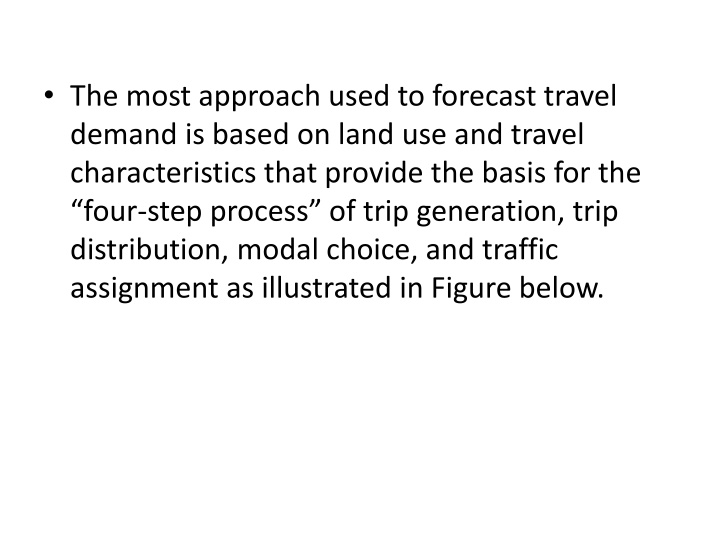
Forecasting Travel Demand Through Urban Traffic Analysis Zones
Explore how forecasting travel demand is achieved through the delineation of traffic analysis zones (TAZs) based on land use, traffic characteristics, and the four-step process. Learn about zone definition, interzonal trips, and more in urban transportation planning.
Download Presentation

Please find below an Image/Link to download the presentation.
The content on the website is provided AS IS for your information and personal use only. It may not be sold, licensed, or shared on other websites without obtaining consent from the author. If you encounter any issues during the download, it is possible that the publisher has removed the file from their server.
You are allowed to download the files provided on this website for personal or commercial use, subject to the condition that they are used lawfully. All files are the property of their respective owners.
The content on the website is provided AS IS for your information and personal use only. It may not be sold, licensed, or shared on other websites without obtaining consent from the author.
E N D
Presentation Transcript
The most approach used to forecast travel demand is based on land use and travel characteristics that provide the basis for the four-step process of trip generation, trip distribution, modal choice, and traffic assignment as illustrated in Figure below.
Study Area To forecast travel demand, the study area must be delineated into a set of traffic analysis zones (TAZ) that form the basis for analysis of travel movements within, into, and out of the urban area. The set of zones can be aggregated into larger units, called districts. Zone definition. The urban area is divided into small spatial analytical areas, similar in concept to census tracts.
Generally, transportation analysis zones (TAZs) are defined by: Homogeneous land uses, such as residential neighborhoods, central business districts, and industrial areas. Major traffic generators such as universities, hospitals, shopping centers, and airports. Natural or human-made geographic boundaries, such as rivers or railroads.
Trips between two different traffic zones are known as interzonal trips, whereas intrazonal trips are those that start and end within the same zone.






















